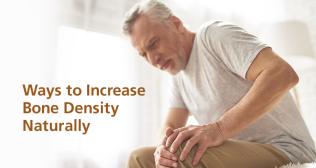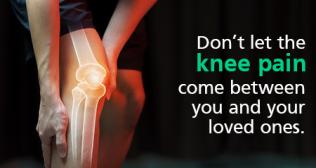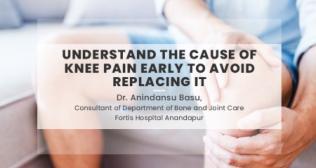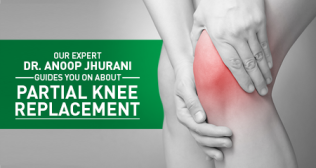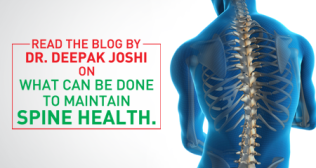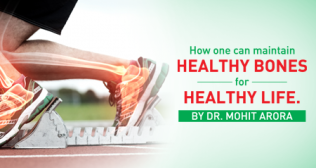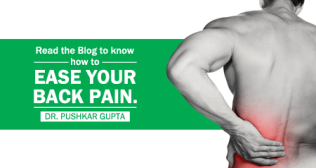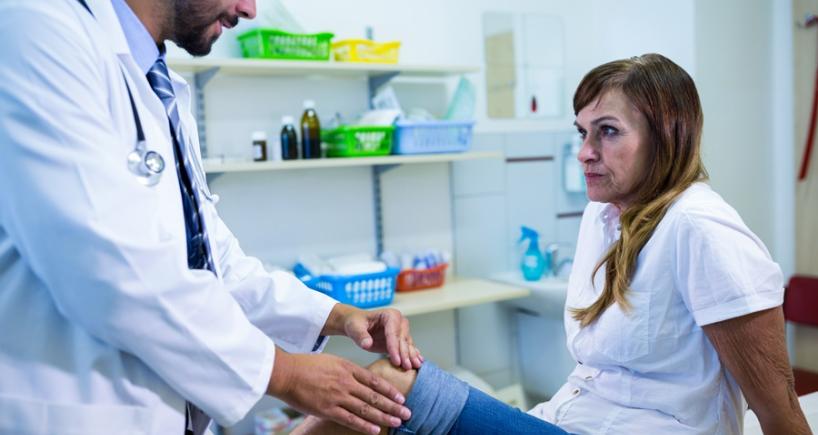
What Is Knock Knee: Causes, Symptoms, and Treatment Options
Introduction
Knock knee, medically known as genu valgum, is a common orthopedic condition affecting limb alignment. The knees angle inward toward each other, causing the lower legs to appear bent outwards. Though the condition affects individuals of all ages, in infants and toddlers, it corrects itself as a child grows. However, if the condition persists beyond childhood, it may require medical intervention.
How to Know If a Person Has Knock Knees
Ask the individual to stand with their feet together and their knees touching. If their ankles remain apart, they could have knock-knee. Associated symptoms include:
- Gait Abnormalities: Individuals with knock-knee may exhibit an abnormal walking pattern, such as a waddling gait, to compensate for the misalignment of their knees.
- Knee Pain: Knock-knee can sometimes lead to pain or discomfort in the knees, hips, or ankles, particularly after physical activity or prolonged periods of standing due to uneven distribution on the joints.
- Joint Stiffness: Some individuals may experience stiffness or restricted range of motion in the knees due to the abnormal alignment.
- Instability: Severe cases of knock-knee may result in knee instability, increasing the risk of falls or injuries.
Causes of Knock Knee
Knock knees can have various causes, which are listed below:
- Knock knee is a common variation of normal skeletal development, particularly in children between 2 and 5 years old. The condition usually corrects itself as the child grows older without treatment.
- Rickets caused by a deficiency of vitamin D, calcium, or phosphate can cause knock knees.
- If there is a family history of the condition, an individual may be more predisposed to developing the condition.
- Excess body weight can put additional stress on the knees and cause knock knees, particularly in children.
- Injuries to the knee joint or surrounding structures, such as ligament injuries or fractures, can disrupt normal alignment and lead to knock knees.
- Certain bone disorders, such as Blount’s disease, can affect the growth plates near the knee joint, resulting in abnormal bone development and genu valgum.
- Weakness or imbalance in the muscles around the knee joint can affect alignment and contribute to knock knees.
- Neurological conditions, such as cerebral palsy, can affect muscle control and coordination, leading to abnormal alignment of the knees.
- Congenital conditions, such as Down syndrome or skeletal dysplasias, may be associated with knock knees.
Consulting a pediatrician or an orthopedic specialist can help diagnose the underlying cause.
Diagnosing Knock Knees
Knock knee can be diagnosed through physical examination, medical history review, and imaging tests if necessary.
- Physical Examination: The doctor inspects the alignment of the knees while the patient is standing with their feet together and their legs straight. They check for any asymmetry in the knees and observe how the knees align when the patient moves.
- Measurement: The angle between the thighs and the lower legs when the knees are extended and when the knees are brought together is measured using a goniometer. A larger angle indicates a greater degree of genu valgum.
- Medical History: The doctor inquires about any symptoms the patient is experiencing, their duration, and family history of similar conditions.
- Imaging Tests: In some cases, imaging tests such as X-rays may be prescribed to assess the severity of knock knees and rule out any underlying causes such as skeletal abnormalities or growth plate disorders.
Treatment for Knock Knee
The treatment for knock-knee depends on several factors, including the severity of the condition, the individual’s age, and complications. Treatment options may include:
- Observation: In mild cases of knock-knee, particularly in young children, no treatment may be necessary as the condition may correct itself as the child grows.
- Physical Therapy: Targeted exercises can help strengthen the muscles around the knees and improve overall alignment and stability.
- Orthotic Devices: Custom-made shoe inserts or braces may be prescribed for support and alignment correction.
- Surgical Intervention: In severe or persistent cases of knock-knee, surgery may be recommended to realign the bones of the knee joint. Procedures such as osteotomy, where the bone is cut and realigned, may be performed to correct the deformity. In rare cases, doctors may recommend knee replacement surgery.
Post-Treatment Care and Prevention
After undergoing treatment for knock-knee, it’s essential to follow post-treatment care instructions provided by the healthcare providers.
- Physical Therapy: Individuals must continue with prescribed exercises and rehabilitation programs to maintain strength, flexibility, and joint stability.
- Wearing Orthotic Devices: Shoe inserts or braces should be used as recommended to provide ongoing support and alignment correction.
- Regular Follow-up Visits: The progress should be monitored to address concerns or complications.
- Maintaining a Healthy Lifestyle: Regular physical activity must be carried out to maintain a healthy weight, and activities that may increase knee pain or instability should be avoided. A diet rich in calcium and vitamin D, including milk, yogurt, cheese, leafy greens, and sufficient sunlight, is essential for maintaining strong bones.
Some cases of knock knee may not be preventable due to genetic or developmental factors and require the following steps to ensure healthy knee alignment:
- Practicing good posture habits like standing and sitting with the spine aligned and the knees slightly bent.
- Doing exercises that target and strengthen the muscles around the knees, such as squats, lunges, and leg presses, can help support proper knee alignment.
- Minimizing activities that strain the knees, such as high-impact sports or repetitive bending or twisting motions.
- Seek prompt medical attention if symptoms of knock-knee develop to prevent the condition from worsening and reduce the risk of complications.
By understanding the symptoms, diagnosis, treatment options, and preventive measures associated with knock-knee, individuals can take proactive steps to manage the condition effectively and maintain optimal knee health. If you or someone you know is experiencing symptoms of knock-knee, consulting with a healthcare professional is the first step toward diagnosis and appropriate management.
Popular Searches :
Hospitals: Cancer Hospital in Delhi | Best Heart Hospital in Delhi | Hospital in Amritsar | Hospital in Ludhiana | Hospitals in Mohali | Hospital in Faridabad | Hospitals in Gurgaon | Best Hospital in Jaipur | Hospitals in Greater Noida | Hospitals in Noida | Best Kidney Hospital in Kolkata | Best Hospital in Kolkata | Hospitals in Rajajinagar Bangalore | Hospitals in Richmond Road Bangalore | Hospitals in Nagarbhavi Bangalore | Hospital in Kalyan West | Hospitals in Mulund | Best Hospital in India | Gastroenterologist in Jaipur | Cardiology Hospital in India
Doctors: Dr. Rana Patir | Dr. Rajesh Benny | Dr. Rahul Bhargava | Dr. Jayant Arora | Dr. Anoop Misra | Dr. Manu Tiwari | Dr. Praveer Agarwal | Dr. Arup Ratan Dutta | Dr. Meenakshi Ahuja | Dr. Anoop Jhurani | Dr. Shivaji Basu | Dr. Subhash Jangid | Dr. Atul Mathur | Dr. Gurinder Bedi | Dr. Monika Wadhawan | Dr. Debasis Datta | Dr. Shrinivas Narayan | Dr. Praveen Gupta | Dr. Nitin Jha | Dr. Raghu Nagaraj | Dr. Ashok Seth | Dr. Sandeep Vaishya | Dr. Atul Mishra | Dr. Z S Meharwal | Dr. Ajay Bhalla | Dr. Atul Kumar Mittal | Dr. Arvind Kumar Khurana | Dr. Narayan Hulse | Dr. Samir Parikh | Dr. Amit Javed | Dr. Narayan Banerjee | Dr. Bimlesh Dhar Pandey | Dr. Arghya Chattopadhyay | Dr. G.R. Vijay Kumar | Dr Ashok Gupta | Dr. Gourdas Choudhuri | Dr. Sushrut Singh | Dr. N.C. Krishnamani | Dr. Atampreet Singh | Dr. Vivek Jawali | Dr. Sanjeev Gulati | Dr. Amite Pankaj Aggarwal | Dr. Ajay Kaul | Dr. Sunita Varma | Dr. Manoj Kumar Goel | Dr. R Muralidharan | Dr. Sushmita Roychowdhury | Dr. T.S. MAHANT | Dr. UDIPTA RAY | Dr. Aparna Jaswal | Dr. Ravul Jindal | Dr. Savyasachi Saxena | Dr. Ajay Kumar Kriplani | Dr. Nitesh Rohatgi | Dr. Anupam Jindal |
Specialities: Heart Lung Transplant | Orthopedic | Cardiology Interventional | Obstetrics & Gynaecology | Onco Radiation | Neurosurgery |







